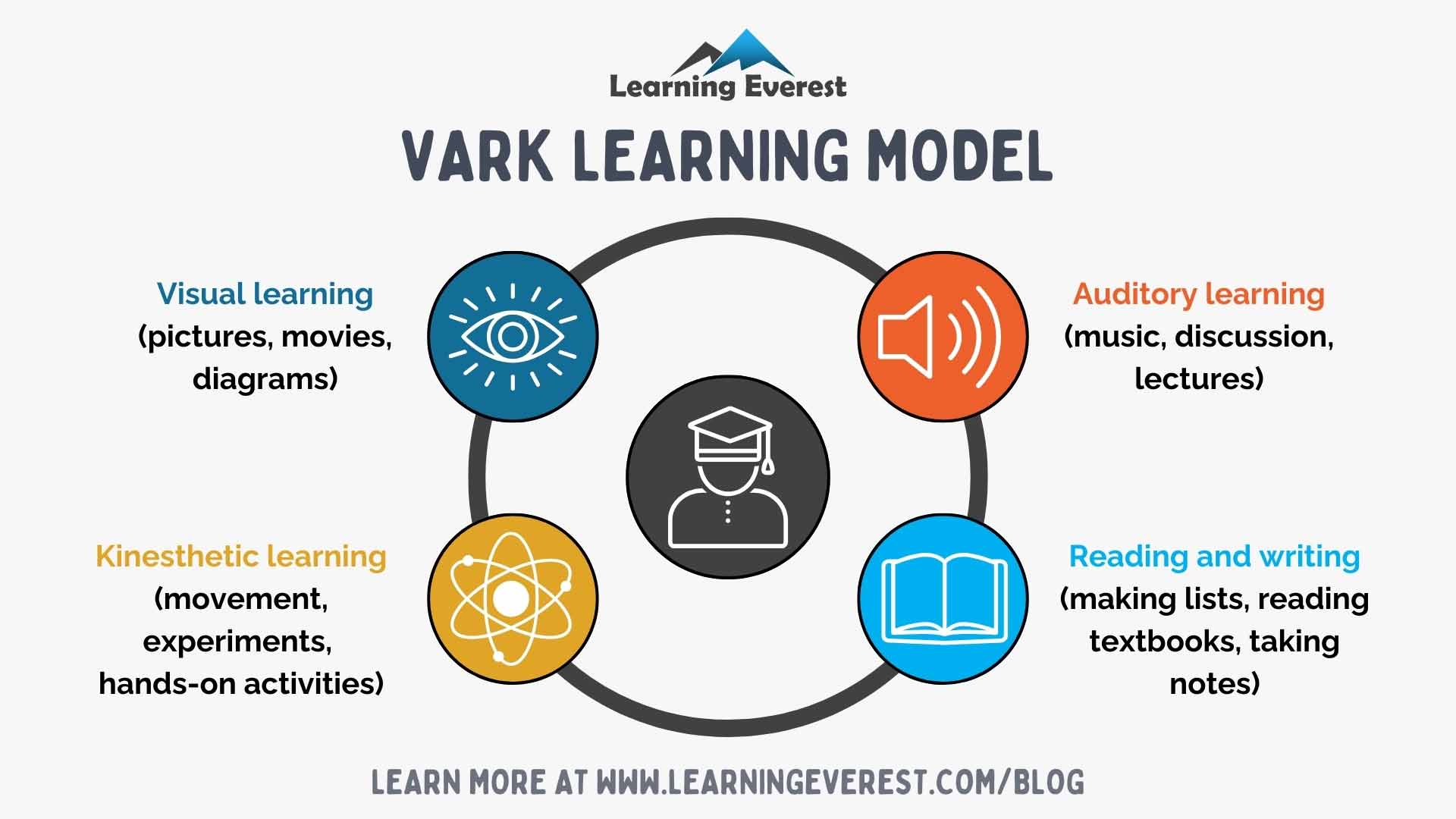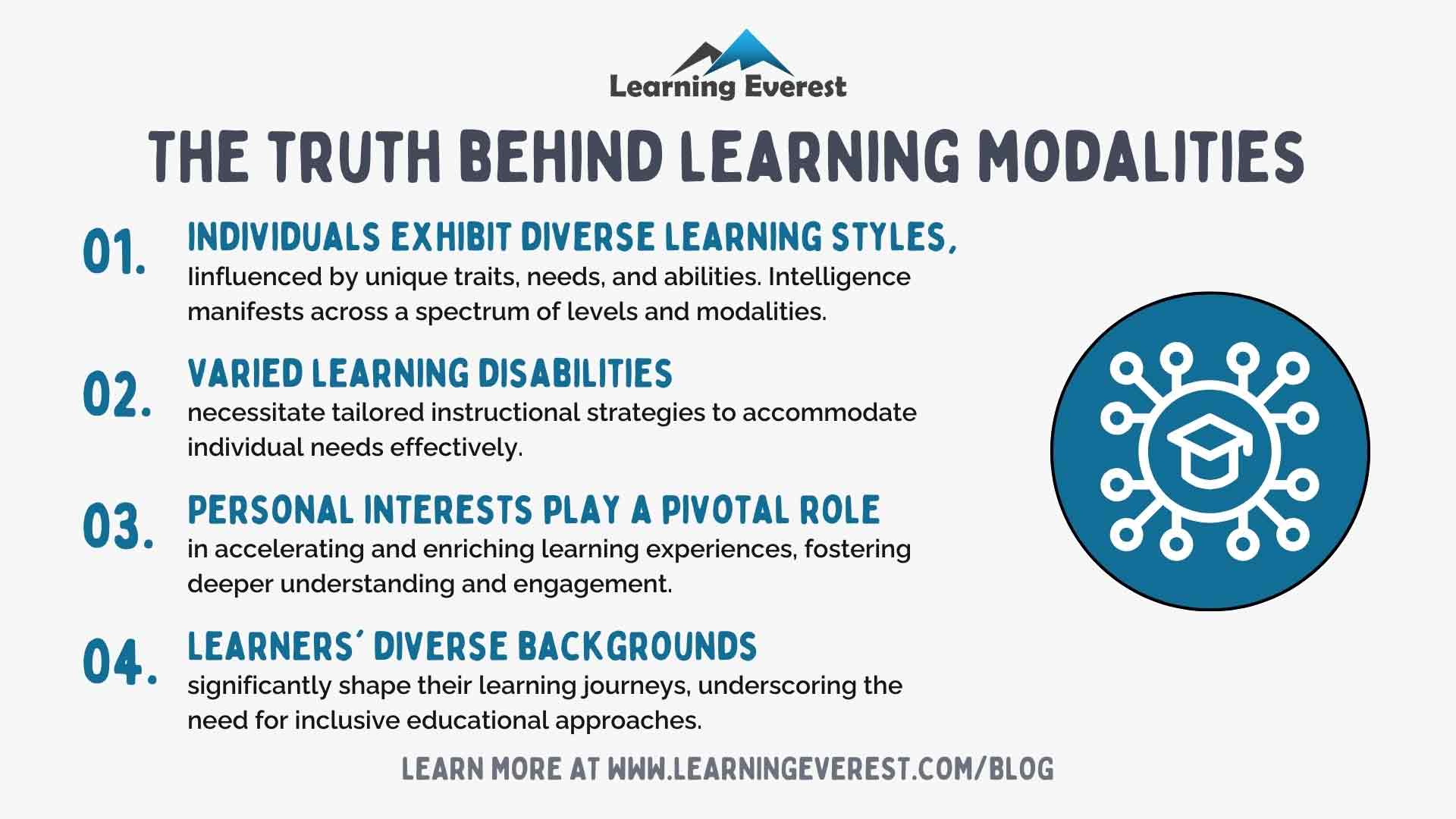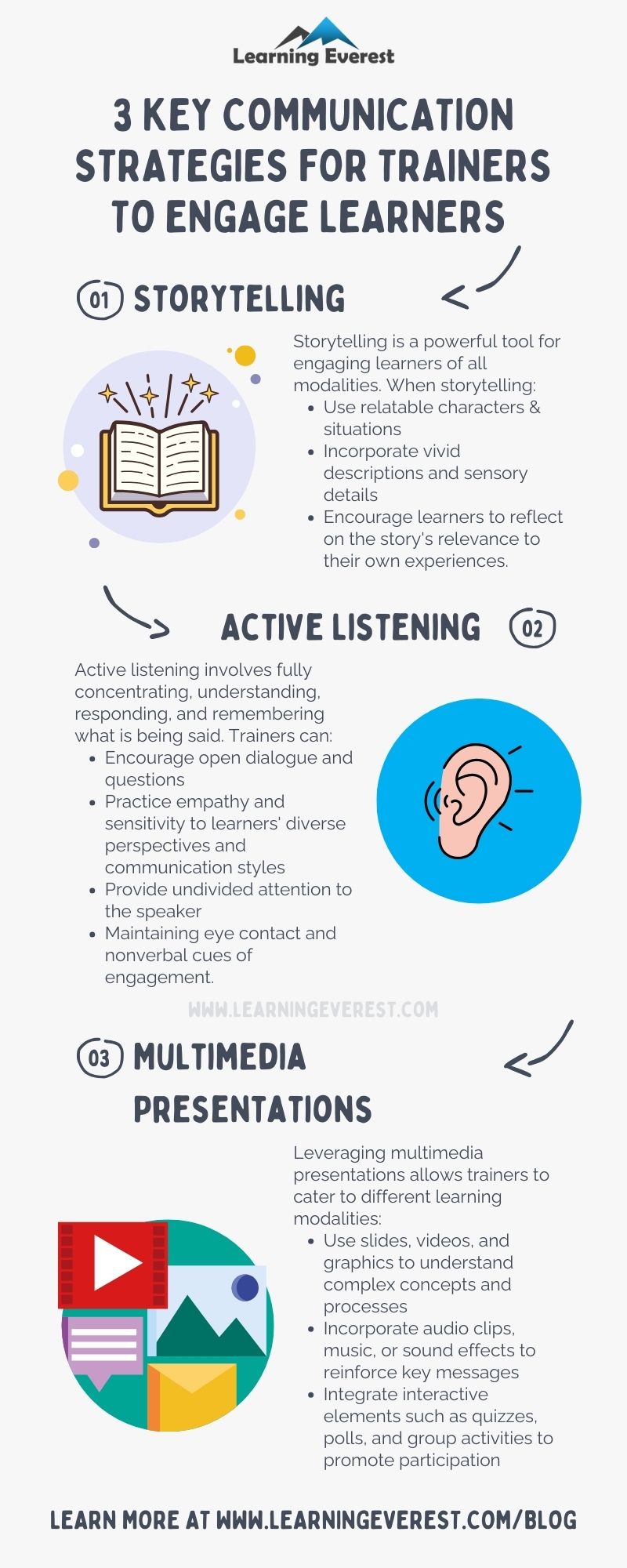Do you know what are learning modalities? This article breaks down what are learning modalities and how can we use them in the corporate world.
Table of Contents
- What are Learning Modalities?
- Why Knowing “What are Learning Modalities?” Matters
- Implications of Knowing “What are Learning Modalities?” for Corporate Training
- Infographic
- Knowledge Check!
- Frequently Asked Questions (FAQs)
- What is meant by learning modalities?
- What are the learning modalities theories?
- What are modalities in training?
What are Learning Modalities?
Learning modalities refer to the various sensory channels or modes through which individuals acquire, process, and retain information. Learning modalities are a popular concept in psychology and education intended to identify how people learn best.
The idea that learners learn best when teaching/training methods match their learning styles, strengths, and preferences became popular in the 1970s and 1980s. However, most studies suggest that personal learning preferences have little to no influence on learning outcomes. Yet the concept of learning styles remains extremely popular. There are various ways of categorizing learning styles, but Neil Fleming’s VARK model is among the most popular. Let’s discuss this in detail.
VARK Model
Developed by Neil Fleming, the VARK model categorizes learners into four learning modalities: Visual, Auditory, Reading/Writing, and Kinesthetic. Fleming introduced this inventory in 1987, which was designed to help students and others to learn more about their individual learning styles. According to this model, individuals have preferences for specific modes of learning based on how they best absorb and process information.
According to this VARK model, learners are categorized by whether they have a preference for:

VARK Learning Model
The model suggests that these modalities reflect how learners learn best. Let’s discuss each in detail.
Visual Learning Modality
Visual learners, as the name suggests, learn best by seeing. Graphic displays such as charts, diagrams, pictures, illustrations, handouts, and videos are the most helpful learning tools for visual learners. They benefit from seeing information presented in a graphical format and may excel in tasks that involve spatial reasoning and observation.
Auditory Learning Modality
Auditory (or aural) learners learn best by hearing information. They may prefer lectures, discussions, podcasts, and audiobooks as primary modes of learning.
Reading and Writing Learning Modality
Individuals with a preference for reading/writing learning modality thrive when information is presented in written form. They prefer reading textbooks, articles, and written instructions and may excel in tasks that involve writing note-taking, and textual analysis.
Kinesthetic Learning Modality
Kinesthetic learners learn best through hands-on experiences and physical activities. They prefer to engage in interactive tasks, experiments, simulations, and role-playing exercises to understand concepts and retain information. They often have a strong sense of body awareness and may benefit from incorporating movement into their learning process.
Why Knowing “What are Learning Modalities?” Matters
People might find that understanding their own learning styles can be helpful. Individuals typically have a dominant learning modality, although most people can benefit from a combination of modalities.
- Understanding one’s preferred learning modality can help individuals optimize their study habits, improve information retention, and enhance overall learning outcomes.
- Educators and trainers can create inclusive learning environments by incorporating diverse teaching methods that appeal to different learning modalities.
- Adaptive learning technologies and personalized learning approaches can tailor educational content to match individuals’ specific modalities and learning preferences.

The Truth Behind Learning Modalities
Implications of Knowing “What are Learning Modalities?” for Corporate Training
Understanding employees’ preferred learning modalities allows organizations to tailor training programs to accommodate diverse learning preferences. For example, incorporating visual aids, interactive activities, and hands-on simulations can cater to various modalities and enhance engagement and retention among employees. Recognizing that individuals may have different preferences for receiving information (e.g., visual learners prefer diagrams, auditory learners prefer lectures), corporate trainers can employ diverse communication methods to ensure the message resonates with all participants.
In short, leveraging cognitive theories related to learning modalities in corporate training can lead to more effective and engaging learning experiences, ultimately enhancing employee skill development and organizational performance.
In corporate training, learning modalities represent different delivery modes of learning through which employees’ skills are developed. Learning modalities serve as custom learning solutions to an organization’s training challenges. Learning modalities can take various forms, including:
- ILT — Instructor-led training (ILT) is a method of training facilitated by an instructor. ILT is either face-to-face or virtual. In instructor-led training, learners and instructors are engaged in course content in real time. ILT can be held through one-to-one sessions, small groups, lectures, or workshops. This engagement permits easy give-and-take discussion and a learning environment that is highly social and interactive. This synchronous learning nature provides learners with instant feedback that helps them evaluate their growth. The feedback from their fellow online learners and instructors brings excellent quality to the overall learning experience.
- VILT — Virtual instructor-led training (VILT) is when an instructor facilitates a training program for a group of learners or individuals in a virtual setting. The virtual instructor and the learners are in different places, but the session happens in real-time, so the training simulates a traditional classroom environment. In the modern world of remote and hybrid work environments, many corporate companies are switching to online training solutions for employee learning and development. VILT differs from self-paced training in that it brings learners and instructors together for an interactive experience.
- eLearning — It is a learning process that includes electronic devices like computers or laptops. It uses information and communication as a learning mode and delivers information electronically using databases and learning management systems. E-learning offers a comprehensive range of interactive online services that give instructors, learners, and other participants access to knowledge, tools, and resources to improve the management and delivery of education. eLearning can instruct employees in a wide range of areas, such as technical training, onboarding, safety training, sales and marketing training, and more.
- AR/VR — Augmented and virtual reality, commonly known as AR/VR, uses interactive elements to create a real-world environment that can be accessed digitally. This creates an immersive training environment where employees can learn about the world around them with no risk of damaging products. It simulates any real-world scenario you can imagine and allows employees to interact with true-to-life scenarios without real-world risk. Examples of AR/VR for corporate training include scenario-based training, technical skill training, safety training, multi-step tasks, and more.
- Microlearning – Corporate microlearning is one of the main training tools organizations use today. It refers to highly targeted, bite-sized learning delivered in short bursts. This learning format owes its popularity to the high learner engagement and knowledge retention it produces while also being cost and time-efficient. Microlearning is designed for quick consumption and doesn’t typically exceed 10-15 minutes of learning time. Organizations can quickly roll out information in the form of microlearning when a new training need arises.
- Gamification & Simulation – Gamification uses gaming principles and critical elements to meet the required learning objectives. Gamification techniques leverage people’s basic desires for interaction, learning, mastery, competition, achievement, rank, self-expression, altruism, or closure. Gamification uses rewards for players who accomplish desired tasks or competitions to engage players. Types of rewards include points, badges, levels, progress bars, or providing the player with virtual currency. Making the achievements for accomplishing tasks visible to other players or providing leaderboards encourages players to compete. It is a way to motivate employees when taking a training module and ensure they are engaged. To learn more, click here.
- Mobile learning — Mobile learning, also referred to as mLearning, is a way of accessing learning content through mobile devices. This empowers learning at the point of need, enabling employees to access content whenever and wherever suits them. Mobile phones offer a wide range of delivery formats, making them a good fit for all training needs. You can deliver courses via apps, links, or downloadable content that learners can store and consume offline.
- Blended learning – In corporate learning and development (L&D), there is no one-size-fits-all solution for employees, which is why a blended learning approach may be the right option. This “blend” mixes online learning strategies to effectively meet individual learners’ needs and learning styles. The advantages of using multiple modalities in a blended approach are that it is learners for employees, increases engagement, and personalizes learning opportunities.
Infographic

Three Key Communication Strategies for Trainers to Engage Learners
Knowledge Check!
Now that you know all about what are learning modalities and how you can use them in your organization, what are the common challenges you face when delivering employee training? Let us know, and we will give you some ideas and tips for dealing with these challenges you face. Schedule a meeting today!
Frequently Asked Questions (FAQs)
What is meant by learning modalities?
Learning modalities are methods we use to learn using our senses. In education, the four learning modalities are Visual, Auditory, Reading/Writing, and Kinesthetic. Learners who are visual will learn best when things are presented in a way they can see, like charts and graphs.
What are the learning modalities theories?
VARK Model
Developed by Neil Fleming, the VARK model categorizes learners into four learning modalities: Visual, Auditory, Reading/Writing, and Kinesthetic. According to this model, individuals have preferences for specific modes of learning based on how they best absorb and process information.
What are modalities in training?
In corporate training, learning modalities represent different delivery modes of learning through which employees’ skills are developed. Learning modalities serve as custom learning solutions to an organization’s training challenges.





